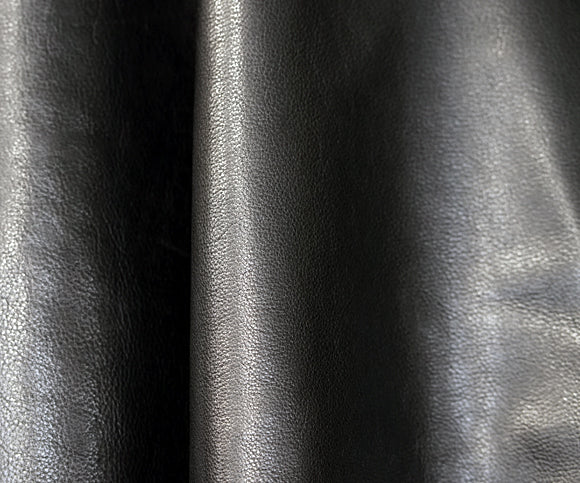
Oiled Vintage Steer
Head Factory started handling "HF-GOAT" a few years ago.
It has been well received for its lightness and rich texture.

Nowadays, many people choose us for their performance, which is comparable to the standard material Vintage Steer, but when we first launched, even when we made select orders where we could freely choose the material, we still didn't choose Goat. I didn't see anyone doing it.

At the time, ultra-thick steerhide in the 1.8mm thickness class reigned as a standard at head factories, and I spent many restless days until I managed to get things back on track, but I still knew that Goat's characteristics were suitable for rider jackets. I was confident that I would be able to convey my message and be satisfied.

Going back even further, we started selling "Vintage Steer" some time after the Head Factory was launched.
Up until then, when choosing materials, we had focused on strength, focusing on thickness, tear fastness, abrasion, sunlight fastness, color fastness, and strength, strength, strength. But no, I thought that the charm of a rider's jacket and the charm of leather were not only that, so I stopped and thought about what kind of leather I should develop, and the material I arrived at was Vintage Steer.

Creating an atmosphere while maintaining strength is the real thrill of aging.
We were fortunate to meet a tanner who was connected to our ideas at the time, and through repeated trial and error, we were able to create our product.
Thanks to all of you, we have received support from many customers.
And this winter, a new material “Oiled Vintage Steer” has been added to the lineup.

Like vintage steers, we use raw hides from North America.
Since leather is raw, even the same cowhide has slightly different characteristics depending on where it is produced. The distribution background surrounding steerhide tends to become more difficult year by year, but there are nuances that only North American steerhide can produce, so we are very particular about this and manage to manage it.
A part of the chromium is removed during the tanning process and tannin is injected later, which is a mixed tanning method that removes chromium and then injects tannin.The oil content is adjusted to create a sticky and flexible tan.
What we are even more particular about is the texture of the surface, which has a wild look that is completely different from the traditional smooth leather of Vintage Stare.
The process of creating this grained texture uses a different method from that of GOAT, but tanners use various methods to finish each piece, depending on the material used and the final image.
Therefore, the real deciding factor is whether we can firmly convey the image we are aiming for to the tanner, whether we have a clear image in the first place, and whether the recipient has the passion to share that image. I think it's exactly the same as factory made-to-order production.

The thickness of the oiled vintage steer is 1.3 to 1.4 mm, which is about 1 to 2 mm thinner than the vintage steer.
Our goal when launching this new material was to create a leather that would blend in from the moment you wear it while inheriting the texture of vintage steers, so we could improve the stickiness caused by oil, improve the flexibility achieved through the graining process, and adjust the thickness. This is achieved through a balance of these.
The image is this season's new model "AVDJ"
This is a new model that is the first to use an oiled vintage steer.
This is getting long, so I'll leave the introduction of AVDJ for another time.
If you are interested in new models and new materials, please check them out at the store!
[Ichijima]



